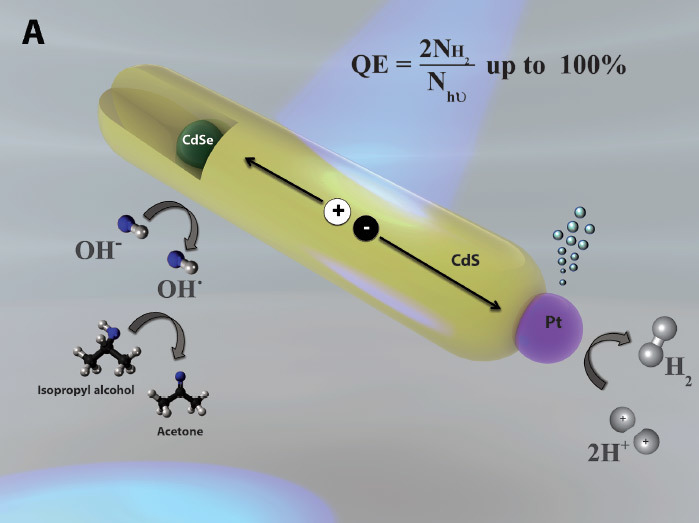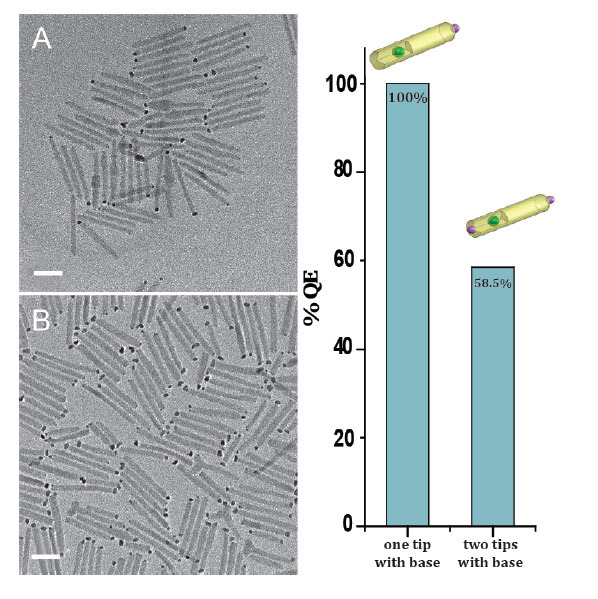Water splitting with 100% efficiency: half done

If you find a cheap and simple way of electrolysis / photolysis of water, then we get an incredibly rich and clean source of energy - hydrogen fuel. Burning in oxygen, hydrogen does not form any side emissions, except water. Theoretically, electrolysis is a very simple process: it is enough to pass an electric current through water, and it is divided into hydrogen and oxygen. But now all developed technical processes require such a large amount of energy that electrolysis becomes unprofitable.
Now scientists have solved a piece of the puzzle. Researchers from the Technion-Israel Institute of Technology have developed a method for carrying out the second of two steps of the redox reaction - reduction - in visible (sunlight) with an energy efficiency of 100% , far exceeding the previous record of 58.5%.
')
It remains to improve the half reaction of oxidation.
Such high efficiency was achieved due to the fact that only light energy is used in the process. The catalysts (photocatalysts) are nanorods 50 nm long. They absorb photons from a light source - and give out electrons.
In the oxidation half reaction, four separate hydrogen atoms and an O 2 molecule (which is not needed) are produced. In the reduction half-reaction, four hydrogen atoms are mated into two H 2 molecules, producing a useful form of hydrogen — H 2 gas,
The efficiency of 100% means that all photons entering the system are involved in the generation of electrons.
At this efficiency, each nanorod generates about 100 H 2 molecules per second.

Now scientists are working to optimize the process technology, which so far requires an alkaline environment with an incredibly high pH. This level is not acceptable for actual operating conditions.

In addition, the nanorods are subject to corrosion, which is also not very good.
Nevertheless, today, humanity has taken a step closer to obtaining an inexhaustible source of clean energy in the form of hydrogen fuel.
Scientific work published in the journal Nano Letters ( mirror ).
Source: https://habr.com/ru/post/391169/
All Articles